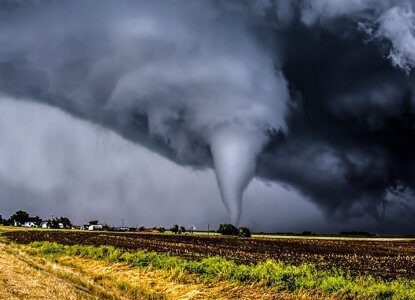
Cumulative damage to the world economy from natural disasters in 2022 decreased by about 15% compared with 2021 and amounted to about $270 billion against $320 billion, according to preliminary data from Germany’s Munich Re, the largest reinsurance company in the world.
The volume of insured losses, meanwhile, remained virtually unchanged at $120 billion.
Economic losses last year were in line with the average of the previous five years, while insured losses were well above average ($97 billion in 2017-21).
“It is alarming that natural disasters particularly affect citizens in the poorest countries. That’s why preventive measures and financial protection, such as insurance, are especially important,” said Thomas Blunk, a member of Munich Re’s board of directors.
The most devastating event of the past year was Hurricane Ian, which struck the Florida coast in September, bringing wind gusts of nearly 250 kilometers per hour. It caused an economic loss of $100 billion, with insured losses of $60 billion. In terms of damages when adjusted for inflation, Ian is second only to Hurricane Katrina in 2005.
In second place is the flooding in Pakistan, caused by a record monsoon in terms of rainfall. Some 1,700 people were victims of the flooding, and the direct damage was at least $15 billion, virtually all of it uninsured.
“When analyzing the data for 2022, there are two key factors to keep in mind. First, the La Niña phenomenon is in its third consecutive year, increasing the likelihood of hurricanes in North America, flooding in Australia, drought and heat waves in China, and heavy monsoons in parts of South Asia. In addition, extreme weather events have become more frequent due to climate change. Sometimes these factors overlap,” wrote Ernst Rauch, chief climate scientist at Munich Re.